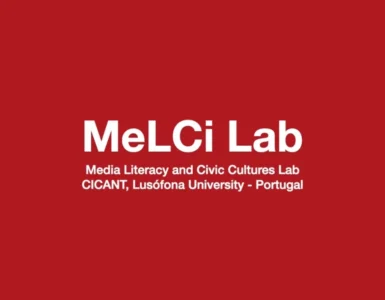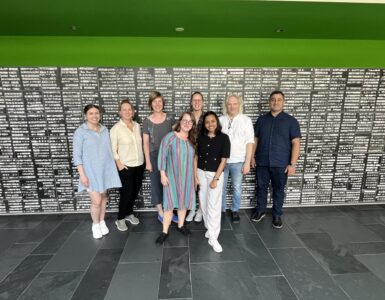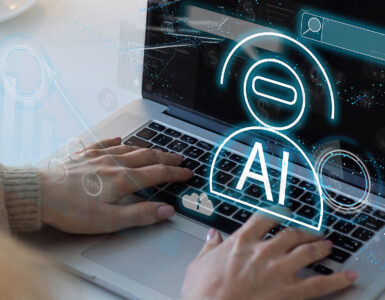by Maria Pavlopoulou, University of Leeds, UK.
Navigating the integration of Artificial Intelligence (AI) in Higher Education is like trying to tame an invisible source of witchcraft – mysterious, challenging and at the same time, promising! In the attempt to approach all the possible concerns associated with this endeavour, the thought-provoking words from Erin Hanson’s poem spark to my mind:
“What if I fall?” Oh, but my darling, what if you fly?”
We may stumble upon a thousand failures trying to properly leverage AI in Higher Education, but at the same time, this is a research field that encourage us to explore and critically reflect.

As an educator myself and a technology enthusiast, my interest in the transformative power of AI was one of the main reasons for applying to the Master of Arts programme in Digital Education. Under the guidance of my tutors, I have been encouraged since the beginning of the 1st Module (Education in a Digital Society) to critically engage and be creative with various AI tools. One of these was linked to a weekly post-seminar task related to different modes of learning. We were assigned to present a debate between contiguous and distance education, asking ChatGPT-3.5 to discuss this topic with us. Above all, we were invited to focus on critically analysing the arguments provided by the AI tool and questioning whether this comparison is a fair and valid one or not.
The challenges of presenting this debate turned into an opportunity when I realised the potential to present it as a real discussion rather than choosing a more traditional route. Since ChatGPT-3.5 contradicts itself, why shouldn’t I create two personas? Could I give voice to two different advocates presenting compelling arguments in a panel-like discussion? Besides, the Contiguous vs. Distance Education Debate is proven to be a never-ending discussion with no final winner, as is demonstrated not only by recent research but also by my own engagement with both modes of learning.
Using Canva as my main tool, I created a video presentation, which I enriched with video and audio files generated with NeiroAI and AiVOOV, Canva extensions. NeiroAI facilitated the creation of a personalized AI avatar for the discussion’s moderator, while AiVOOV generated oral speech for each of the two advocates, Sarah supporting Contiguous Education and Mark advocating for Distance Education. This can be accessed here.

Image created with Canva as the thumbnail of my YouTube Video
This multimedia presentation pointed out the benefits of the use of these AI tools, providing me the opportunity to create a more vivid presentation of the contrasting arguments, in a way simple text never could. The interesting intonation of the three speakers highlighted not only the key-ideas of their speech but also the differences between the positive and negative ideas of each mode of learning. A variety of options regarding the tone, the accent, and the appearance of the persona (in the case of the NeiroAI) is offered through these AI tools. These features enabled me to personalize my presentation and create a customized conversation, while easily editing the script. Moreover, I am confident that this experimentation with video and audio Generative Artificial Intelligence gave me the chance me to actively learn through creating and deepen my understanding of the topic.
However, let’s keep it real – interacting with these AI tools was sometimes challenging and made me wonder about the possible threats of its use. Firstly, despite the range of options provided by the tools, fine-tuning the audio and video to ensure the cohesion of my presentation required significant investment of effort and time. Obviously, the main limitation is that AI voices are under no circumstances natural or unique, so I am concerned that they may fail to convey all shades of meaning. For instance, Ι had to often re-edit my text, because AiVOOV could not identify and naturally convey the meaning of some sentence structures. In the end, I noticed that these voices sound somehow identical, thus I suppose that some students might choose not to use this type of Generative AI, trying to make their tasks more authentic and personal.
All in all, experimenting with these video and audio generative AI tools constituted a valuable opportunity for academic evolvement, as I consider that I actively engaged with them. I am confident that they could be incorporated into Higher Education in various other ways, i.e., to upgrade courses’ multimodality and cater for the special needs of students with disabilities. However, we should always critically reflect on its use and application. But are we (tutors and students) capable of doing this? That is a whole different debate.
Editor’s note: Maria Pavlopoulou will be presenting at the upcoming Media & Learning online event titled “Exploring the potential of AI in educational media production” that will take place on 12 December. Learn more about the event here.

Author
Maria Pavlopoulou is a BA Classics graduate of the National and Kapodistrian University of Athens and a current MA student in Digital Education at the University of Leeds.














